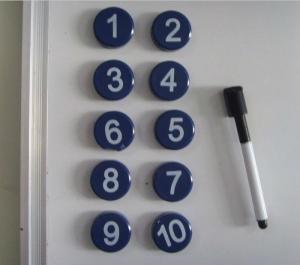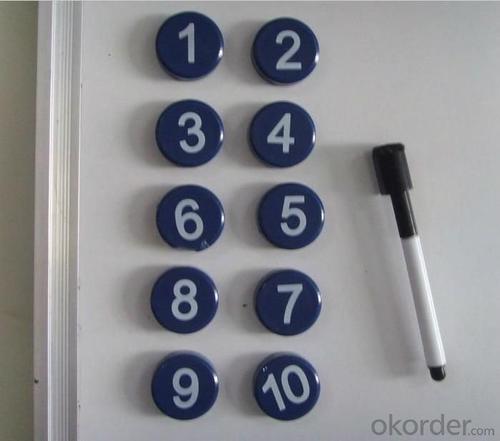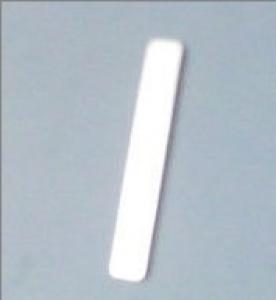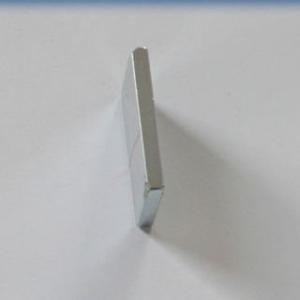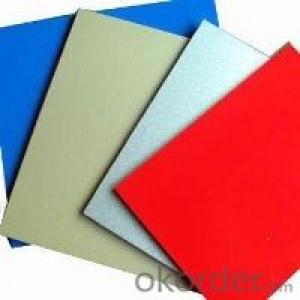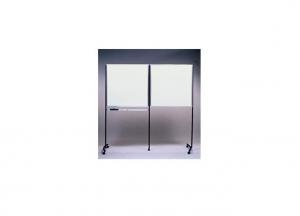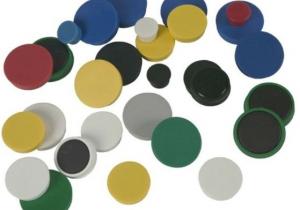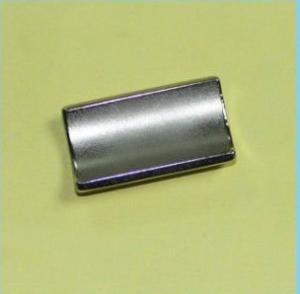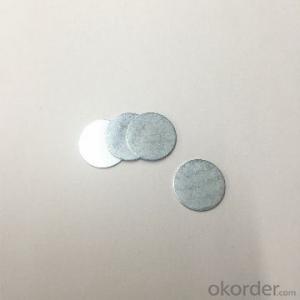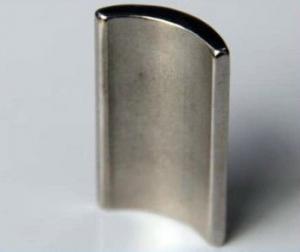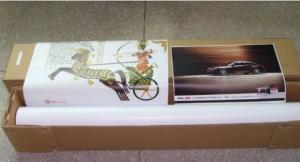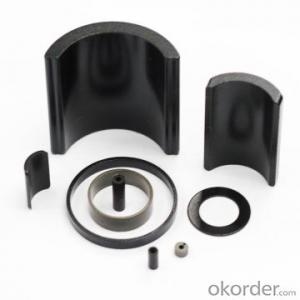Whiteboard Magnet
- Loading Port:
- China Main Port
- Payment Terms:
- TT or LC
- Min Order Qty:
- 4000 Pieces or more pc
- Supply Capability:
- 200 Tons per Month or more pc/month
OKorder Service Pledge
OKorder Financial Service
You Might Also Like
Specifications
1.whiteboard magnet;2.colorful magnetic memo button;
3.20mm,30mm,40mm;
4.10pieces per blister pack
whiteboard magnet
size:round,oblong,star,hear,special forms accepted;
diameter:20mm,30mm,40mm;
materials:plastic/transparent plastic + ceramic/ferrite magnet
logo: printing can be done on the magnet holder or on the blister package,which is optional
MOQ:400 blister bags for one design;
ideal for office and school holder stationery;
can be used as gifts for the children in the kindgarten for these itmes are no harm parts;
package:10pcs into one blister plastic bag,100bags into one middle carton,5.6kg for the middle carton,
4 middle cartons into one outer carton,about 23kg for one outer carton.
- Q: moving charges/current creates a magnetic field around the conductor.so why dosent an electron?if it does why arent all objects magnetic?
- If the electron is orbiting a nucleus, it DOES create a magnetic field around itself. In addition, the electron has an intrinsic magnetic moment due to something we call spin (for lack of any better word to describe a point particle with angular momentum). These magnetic moments interact with each other and the angular momentum of the nucleus to create the fine and hyperfine structures of atomic spectra. So why isn't everything magnetic? The short answer is that everything IS magnetic. It's just that most of the magnetic moments tend to cancel each other out. Within an atom, you usually have a spin up electron for every spin down one. For orbiting electrons (not s0 states with no angular momentum), the directions of orbit cancel out. So most atoms and molecules have little or no magnetic moment. In materials where the atoms DO have a magnetic moment, they atoms are usually all pointed in different directions, so the magnetic fields pretty much cancel out. So only certain materials under certain conditions will have microscopic magnetic moments that line up in such a way that you can observe a macroscopic magnetic field.
- Q: Is the refrigerator strip sealed with magnetic material?
- Not magnetic materials, some silicone, and some resin, but some brands joined the magnetic particle, so there is adsorption.
- Q: If I try to fabricate a magnetic material by say fusing the powders with an arc, will I ultimately end up negating the magnetic properties of the part? I have been told that melting the powder in the presence of a strong magnetic field will align the domains either in the molten state or during solidification. I fear that this process will most likely create a randomly oriented structure that is incapable of being magnetized effectively.
- if that is all you are eating yes. most of the time they are bad for you anyway because they have alot of sugar and carbs.
- Q: Okay, well I‘m doing this science experiment. My variables are the two types of magnets. One is just a regular magnet and the other is a neodymium magnet. So I lay down the dollar bill and first see if the regular magnet works (it won‘t). Then I take the neodymium magnet and see if it attracts the dollar (it will). But I have no idea what I could measure on this experiment. Maybe how far the dollar bill lifts off the table? But I really probably need something else. Any help, please?
- The other answerer was wrong, a rare earth (neodymium) magnet does indeed attract US paper currency. Try it, I did. There is a slight but definite attraction between a neodymium magnet and a dollar bill - it is likely the metallic compounds in the ink. I don't think you need do much more for your experiment; in this case there is either an attraction or there isn't. Often that is what an experiment is all about - the test either works or it doesn't. You could also test other denominations, a $5, a $10. And find paper money from other countries, is it attracted or not? Also experiment with coins. Older US nickels, and Canadian quarters, can be attracted by strong magnets (it's the nickel metal in the coins).
- Q: The air gap in a magnetic circuit is 1.5 mm long and cross sectional area is 2500 mm^2, Calculate:(a) the reluctance of air gap and (b) the mmf to send a flux of 800 muWb across the air gap.
- The above answer is super close. But because this is an air gap and not the magnetic material itself, there will be fringing effects. Since it is an air gap, ur 1 and but the cross section dimensions will increase by 5%. Therefore, the reluctance is: R (1.5 mm)/((4pi*10 ^-7)*(1.05)^2*(2500mm^2)) [you will need to change all mm to meters because of the permubility of air]. with the conversion factors, I get about 433.075 Webers. Next is easy, mmf is the reluctance times flux. I am not sure what your flux is. It should be in Tesla or Webber/m^2
- Q: A strong magnetic field is most likely going to interact most with which of the following?
- I'd say A, a computer. A strong enough magnetic field could erase the hard drive. It would not have any effect on any of the other three.
- Q: What do you mean by N, H, SH and so on in the specifications of magnetic materials?
- The series of products are classified according to different coercive force indexes, N series is low coercive force; M and H series are medium coercive force; S series is high coercive force; UH and EH series are ultra-high coercive force.NdFeB (N, M, H, such as low, medium and other coercive force of N, M, H series, mainly for audio, mobile phones and so on
- Q: please explain to me what magnetic field is in a way i will understand thank you?
- A magnetic field is when the atoms of air lose or gain extra electrons in it's outer electron shell. This happens when a conductive material ( a material with a little ammount of electrons on it's atoms outer shell) becomes electrically charged and a current passes through it. Lets say when a copper wire has positive charged and negative charged atoms moving through it (electricity), the atoms in the air surrounding the wire become stripped of electrons by the charged copper atoms and become attracted to the copper to regain their lost electrons. The air around the wire becomes charged and attracted to the copper. The same thing happens within the earth when different atoms collide. This causes electrical currents inside the earth and travel from north pole to south pole. A magnet is a rock that has unstable atoms that are attracted to the currents within the earth. When you put normal steel near the magnet, the unstable atoms become attracted to the steels stable ones. The initial magnetic force that binds atoms together is a unknown phenomenon that we will never understand. It is reconized as a fundemental force.
- Q: 1. In a certain magnetic field the cross-sectional area is 0.5m^2 and the flux is 1500 uWb. What is the flux density?2. What is the flux in a magnetic material when the flux density is 2500 times 10^-6 T and the cross-sectional area is 150 cm^2?
- 1. B, the flux density is 3,000 microWeber/ square meter which is 3,000 micro Tesla since a Tesla is a Weber/square meter B 3,000 micro Tesla 2. Flux ? B(A), B 2.5 x 10^-3 T and A 0.15 m^2 ? 375 milli Webers
- Q: Crown to go next to an amalgam and do not want the galvanic shock.plan to place porcelain or resin over it to help as well.tooth #18any info much appreciated.
- First of all, none of those materials are magnetic Iron is, but its not used in dental fillings. 22k gold is not used either its way too soft As for the galvanic shock, its not a problem with crowns, as there is no oxidation associated with those materials. Crown's metal portion is mostly made of noble materials (gold, platinum, palladium) and some antioxidative agents. Amalgam, on the other side is made of copper, silver and mercury; It undergo a lot of oxidation and react with each other, but not with the materials used in crowns.
1. Manufacturer Overview
| Location | Guangdong,China (Mainland) |
| Year Established | 2009 |
| Annual Output Value | |
| Main Markets | 11.11% North America 11.11% South America 11.11% Eastern Europe 11.11% Southeast Asia 11.11% Oceania 11.11% Mid East 11.11% Eastern Asia 11.11% Western Europe |
| Company Certifications | license 1 |
2. Manufacturer Certificates
| a) Certification Name | |
| Range | |
| Reference | |
| Validity Period |
3. Manufacturer Capability
| a) Trade Capacity | |
| Nearest Port | |
| Export Percentage | 91% - 100% |
| No.of Employees in Trade Department | |
| Language Spoken: | English, Chinese, Japanese |
| b) Factory Information | |
| Factory Size: | 5,000-10,000 square meters |
| No. of Production Lines | 6 |
| Contract Manufacturing | OEM Service Offered |
| Product Price Range | |
Send your message to us
Whiteboard Magnet
- Loading Port:
- China Main Port
- Payment Terms:
- TT or LC
- Min Order Qty:
- 4000 Pieces or more pc
- Supply Capability:
- 200 Tons per Month or more pc/month
OKorder Service Pledge
OKorder Financial Service
Similar products
Hot products
Hot Searches
Related keywords
